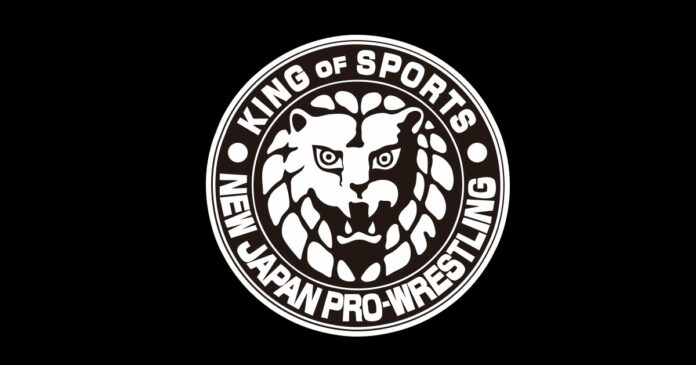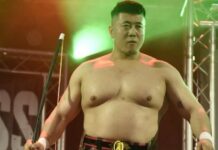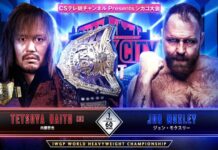
Last month, New Japan Pro Wrestling announced its subsidiary group in the United States, New Japan Pro Wrestling of America, an organization that plans to run events on a regular basis in the western market. Last weekend, NJPW ran its first set of events in San Jose and Los Angeles respectively. The San Jose show featured the final match on US soil for the legendary Jushin “Thunder” Liger, who will retire from the sport after a 35-year career at the Tokyo Dome in January.
While expansion into the American market was a priority for the Japanese league since it was purchased by Bushiroad in 2012 and there was increased distribution through the New Japan world streaming service and live events, a regular schedule in the country is a completely different level. There are many different aspects to such a project and several different variables that could impact the effectiveness of the group in the United States.
New Japan has rightfully garnered rave reviews in the past several years for tremendous matches, but will that translate into full-time success in the United States?
One of the biggest hurdles of expansion for NJPW or any other wrestling entity in 2020 will be the crowded landscape in America, as WWE continues its regular tour schedule, and All Elite Wrestling attempting to build its brand as a second truly national organization. While some of the very diehard demographic might attend multiple events within the span of a few weeks, realistically, there’s only so much fans are willing to spend on a “wrestling budget” regardless of if that cash goes to pay-per-views or live event tickets. All Elite is trying to carve itself a piece of the pie, while Vince McMahon will do everything he can to retain as much of his turf as possible, and make it as difficult as possible for AEW to gain ground, which is why he’s as successful as he is in the industry. At the same time, Ring Of Honor is looking to replenish the roster and remain a draw after many of its top-drawing acts left prior to the formation of the previously mentioned AEW. The recent Joey Mercury controversy that prompted questions about ROH’s financials and stability might be an indication of the increased competition.
Don’t get me wrong, New Japan has some of the best wrestlers in the world on its roster, but that doesn’t automatically translate to success in a new market. Domestically, NJPW surged in popularity under the Bushiroad banner, but the product is structured based on the Japanese culture. For the New Japan product to standout in the United States, it must be as authentic to the New Japan style as possible, but that intrinsically makes it a niche product in America, which is fine if it’s profitable. The problem is, much of the diehard fan base that follows the Japanese scene already has options that cater to them. For example, if the draw of a show is based on the in-ring action then AEW, NXT, and ROH try to present that as a selling point. Considering that All Elite is bringing as much of that philosophy as they can to get off that ground on TNT and NXT is doing the same to counter it on USA, the argument could be made that there’s more main stream availability to products with the in-ring action as the selling point now than any other time in the history of the industry.
Aside from the options of the modern era, as simplistic as it sounds, there are some aspects to the New Japan expansion that are based on the logistics of geographical locations. Keep in mind, Japan is nearly a day a head of the United States as far as the time zones so the travel for talent to work on both continents on a continuous basis might be a very challenging task. When the project was announced, NJPW said that there will be roughly two dozen events scheduled for next year and will continue it’s current Japanese schedule as well. I would say that this is a tough scenario for the roster because the New Japan style is very physical and very risky so is it realistic to expect the roster to travel literally around the globe on a regular basis to compete in those type of matches?
Another aspect to consider is the increased schedule could increase potential injuries. While the work load is balanced in Japan as epic 30-minute bouts are often followed with easier multi-person tag matches on the same tour, that booking style won’t draw as well in the United States. Culturally, Japanese fans consider it a draw just to see top stars like Tanahashi or Okada on the card, even if they work less time in the ring in a tag match. American fans are usually sold on events based on particular match-ups, not just who is booked for the card. For example, a 10-man tag isn’t as much of a selling point in the US as it is in the native country. This is where the US shows must be booked with substance as opposed to just the sizzle of the Japanese names live because eventually the novelty of New Japan in America will wear off if shows are run on a regular basis. Tickets to these NJPW live events are usually expensive because of the costs to bring the shows to the United States with the travel costs for talent etc. Possibly the most important question of this entire situation is will this venture be profitable?
In some ways, it might be a wise decision to keep the shows as “special events” a few times a year instead of a few shows a month to boost the New Japan World revenue. On the flip side, if NJPW can find a profitable niche in the western market then the Japanese group would be the only group in the world that can run live events on two different continents on a regular basis in the industry.
What do you think? Comment below with your thoughts, opinions, feedback and anything else that was raised.
Until next week
-Jim LaMotta
E mail [email protected] | You can follow me on Twitter @jimlamotta







